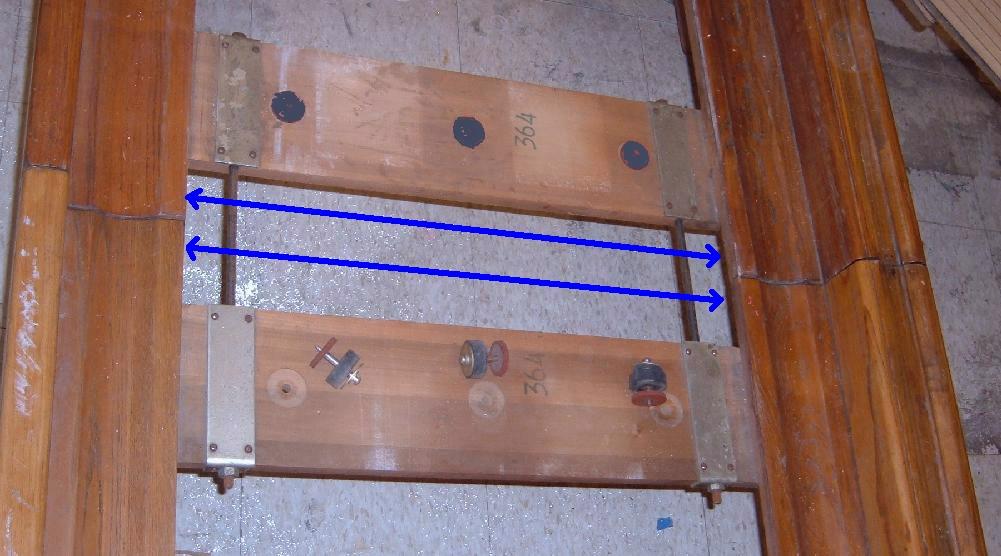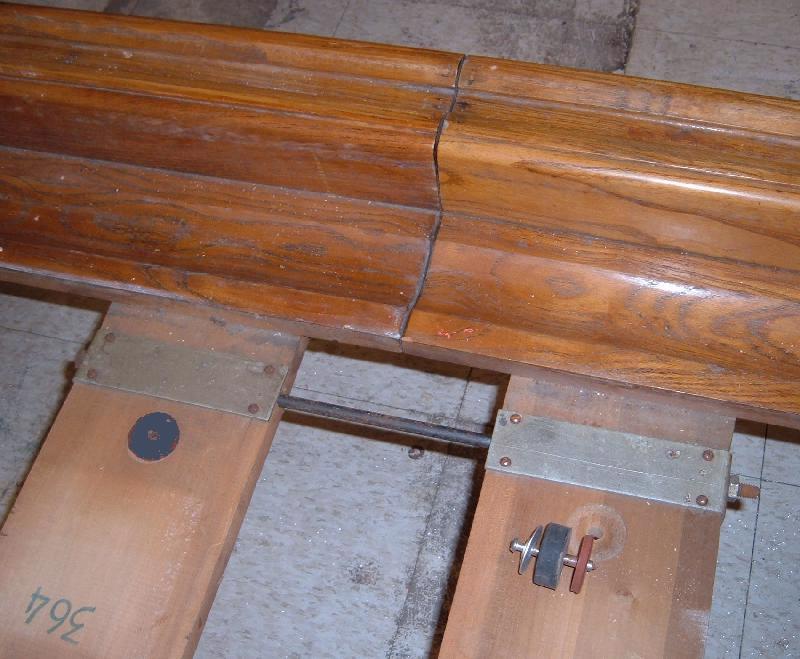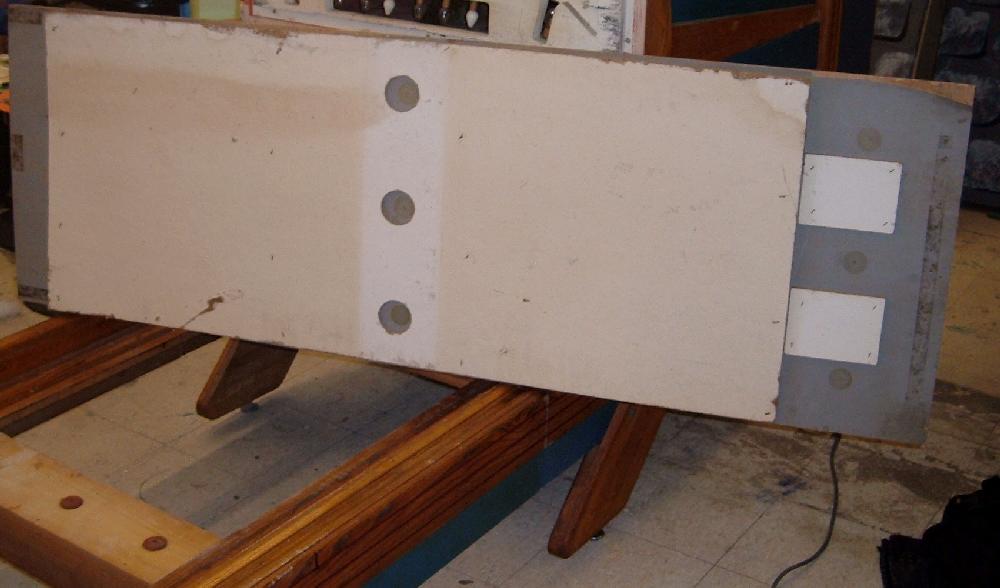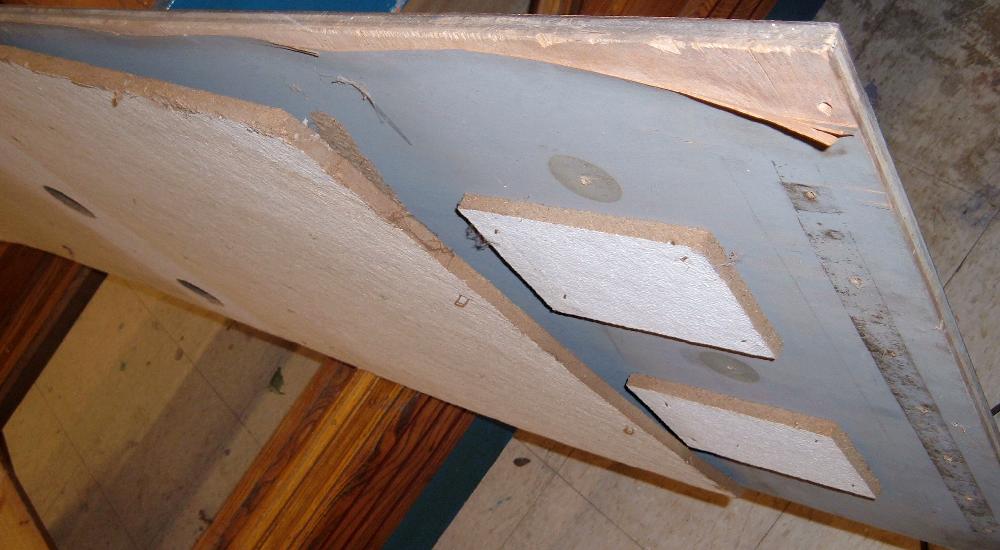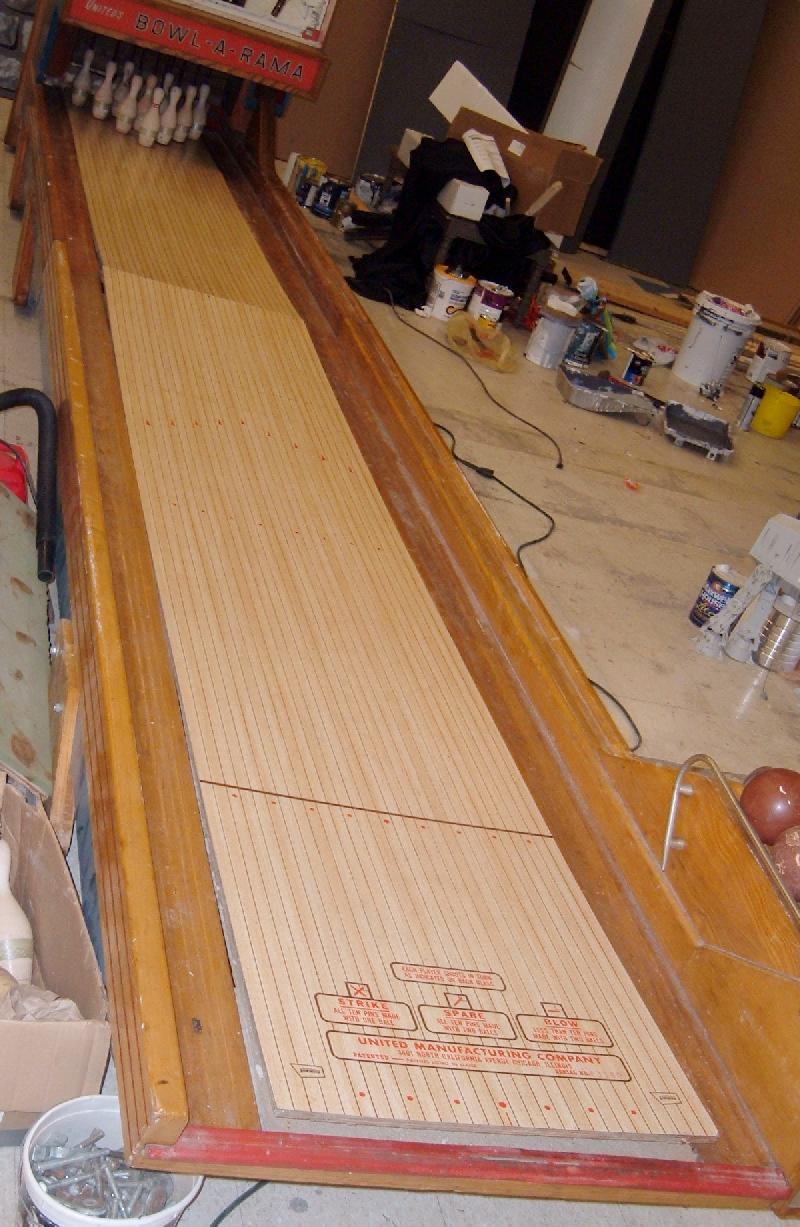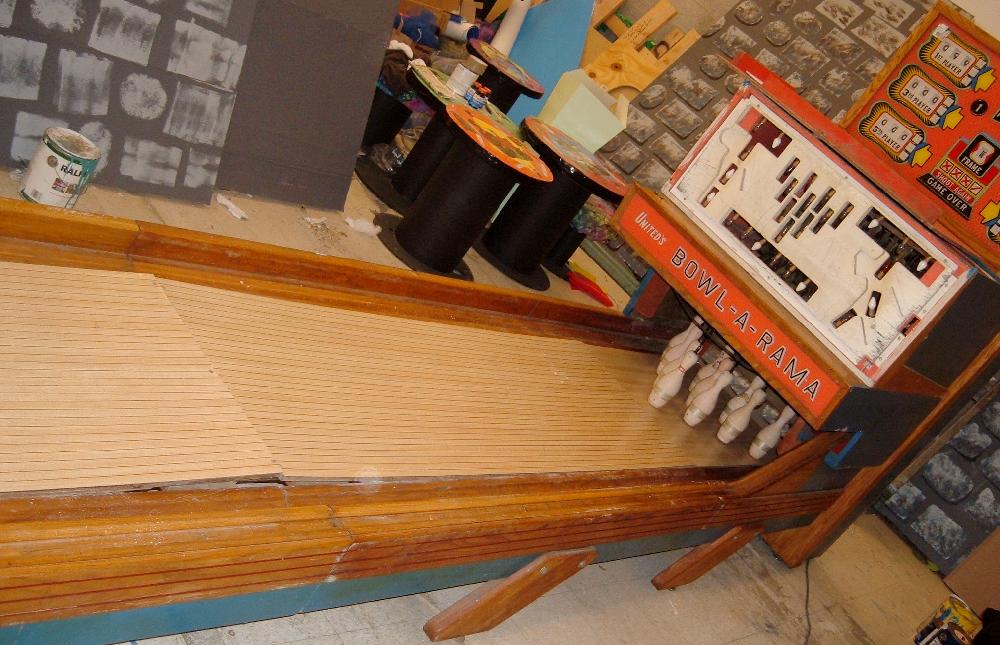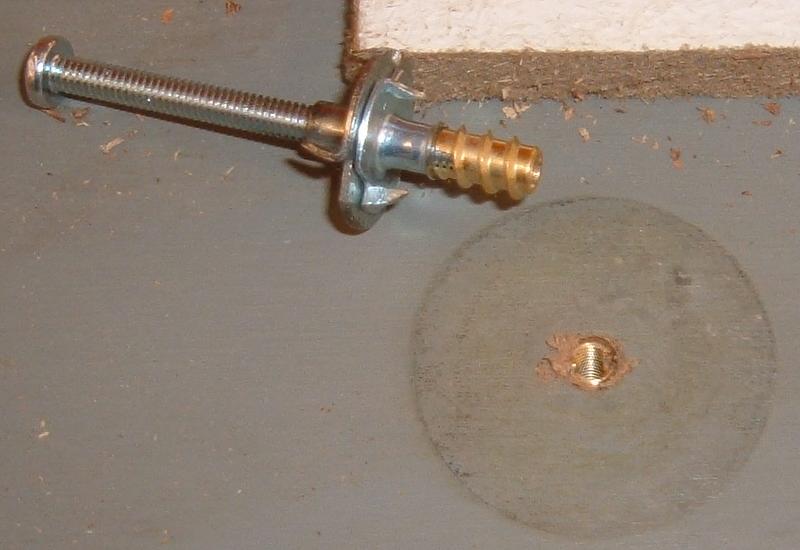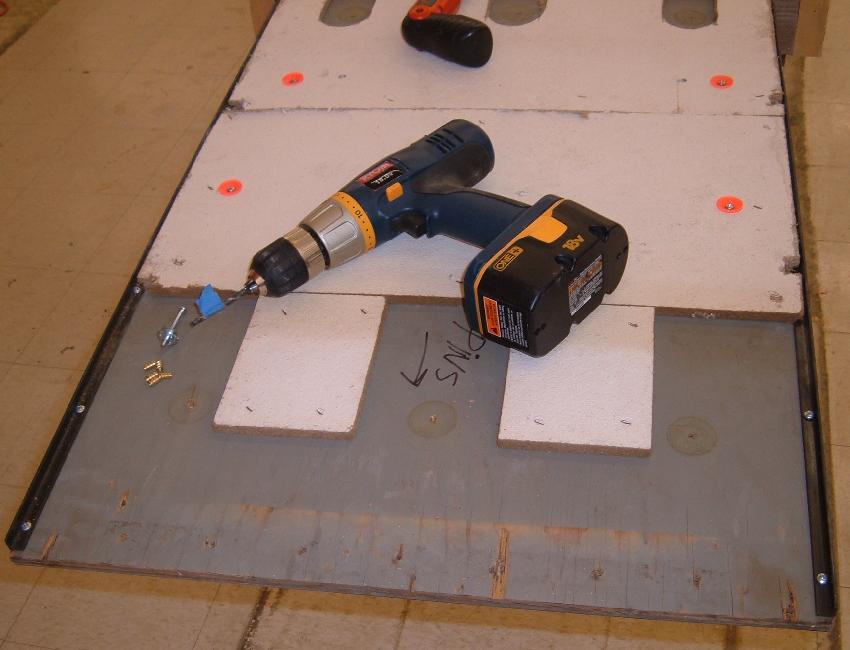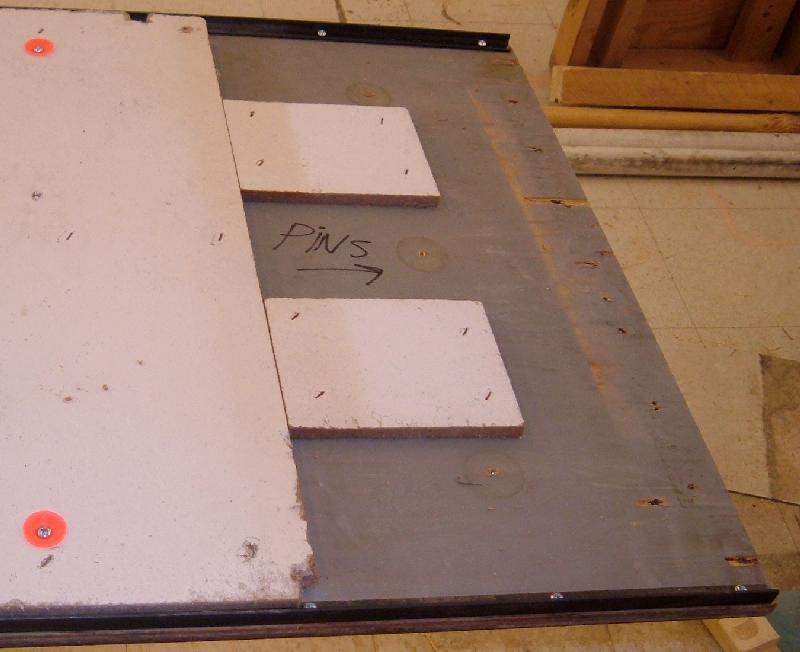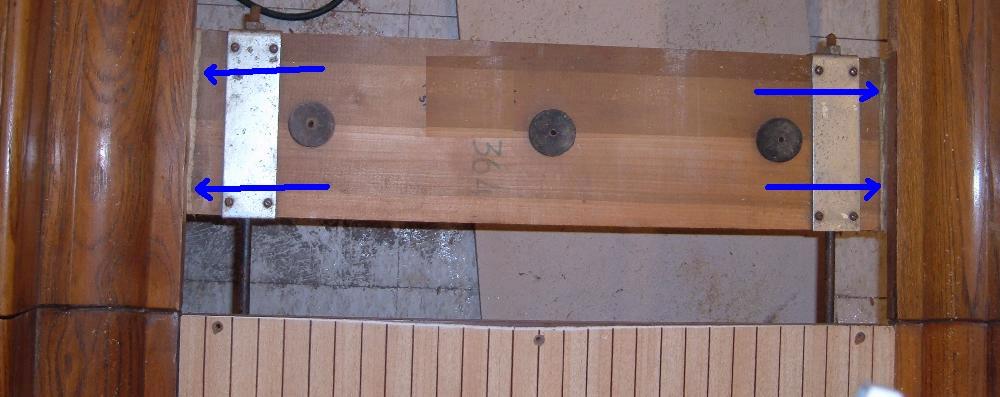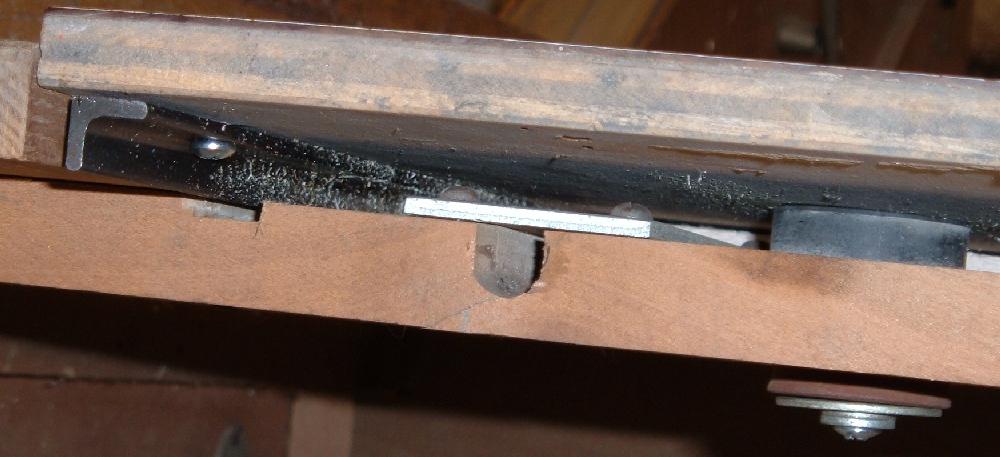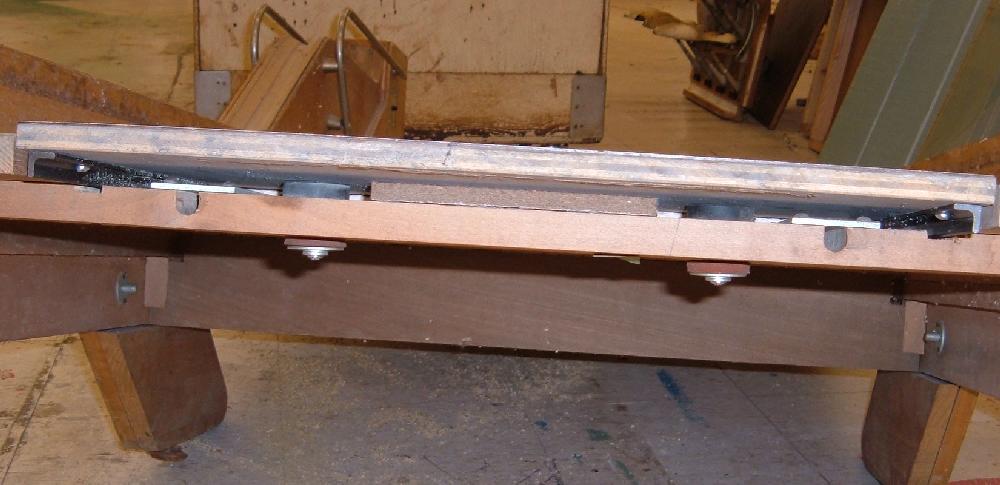|
The frontmost deck piece also screws
to a plate (described later) at its rear edge, where it butts against the middle
deck piece. It then floats above the frame on rubber disks -
two or three at a mid cross member, and two or three at the cross member at the very front of the
whole alley (Bowlarama uses three per row, Bonus only two per row).
It is similarly covered with stapled-on tackboard on the bottom
(in two sections) for sound deadening. At its rearmost lip, where it screws
to that plate, there was a thin strip of rubber. I am convinced that is there
to guarantee that the back of the front section sits ever so slightly higher
than the front of the middle section, to make sure the ball hops DOWN as it
crosses that gap, rather than strking the front edge of the middle section
and cracking the formica, affecting ball travel, etc. So in that sense,
there is the tiniest bit of lane warp built into the design!
About this plate;
it spans across the gap between the front and middle lane section by a few inches
on each side, and spans side to side as far as it can without fouling on the bolts
that hold the frame together. So in other words, both deck section bolt down
to it in the middle, but not on the outside few inches on either side (which
allowed the deck sections to "dish" from side to side, in addition to the
front-back warp.) It is made out of layered hardwood so that it forms a
perfectly flat, stiff plane for the deck sections to mate to, guaranteeing
alignment and reducing warping (except at the edges, as I mentioned.)
Adding a new Lane Frame Cross Member.
When I put it back together, I used a 2"x6" piece of solid oak or maple, the width
of the lane deck (a little over 17 inches)...then drilled countersunk
holes into it and used very coarse thread square-drive screws to pull
the deck sections down against it tightly. Because it was as wide as
the deck, it was in the way of the bolts, so I drilled holes through
it edgewise, front to back, to allow the bolts to pass through.
(They sat exactly on center with the thickness of the board, thank
goodness!) I drilled them oversize to allow the bolts to float around
inside the hole and not make contact anywhere (because that would transmit
vibration and noise.) Did I really need to do that? I'm not sure - my
other de-warping strategy actually worked amazingly well, and the original
narrower plate might have actually been able to do the job at that point.
(I kept it, and might just reinstall it to find out, next time the alley
is disassembled for transport.)
The "before" picture. The blue circle shows the lane warp
and the ski jump it created.
|
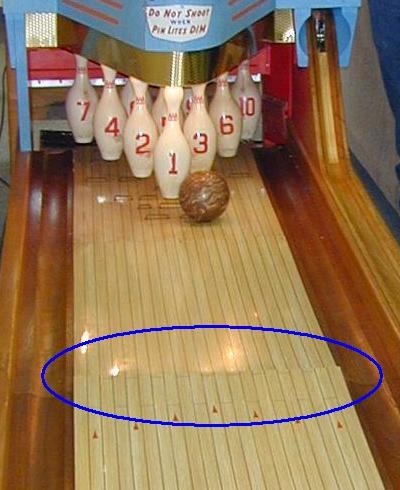
|
Adding Angle Iron to the Lanes.
Now for the main dewarping strategy. Like I said, the rearmost piece was
actually quite flat since I retightened the screws on its oak braces. But the
middle and front sections looked like swayback horses! To fix this, I purchased
some 1/2"x1/2" by 1/8" thick heavy angle iron (they call it "weldable iron" and it's pretty
heavy stuff). I got four 4' lengths, but Home Depot sells 3' lengths
(which you can use, but 4' lengths would be more desirable).
Along one face of each length, I drilled 11/64"
holes every few inches, which will accomodate #8 by 1/2" long screws.
For the front deck section, I used one 4' section on
each side, placed front to back in such a way as to miss most of the cross
braces. For the middle deck section, I cut them down to go the length of the
section except for where my new oak plate went at the middle seam. Starting
at one end, and butting them up against the tackboard insulation on the bottom
of the deck sections, I firmly installed a #8 by 1/2" long screw into each hole, using
coarse-thread screws that were not long enough to poke through the top of the
formica deck. I alternated each side's bracket, too.
So basically I was little by little pulling
the deck up straight against the angle iron as I went. It's not perfect, but it
definitely got it within a hair's breadth of being flat front to back.
Ah, but there's a problem - the 1/2" side to the angle iron is greater
than the distance that the deck sections sit off of the cross braces!!
Not only do they not make angle iron any smaller, but any smaller wouldn't
have been strong enough to pull the warped wood straight. So I (brace yourself)
NOTCHED the cross braces to allow room using a router with a 3/8" bit.
I cut two 1/4" deep 3/8" wide slots
centered on where each angle iron was making contact and then
routed the wood out between the slots. This is one each side, on
two cross braces (total of 4 routed slots in this otherwise
pristine 1958 woodrail bowling alley). But it's all hidden when the
thing is assembled. A router worked great (the slots are next to the gutters)
to make clean looking slots.
With those slots now allowing
clearance for how far the angle iron hung under the alley, I put
everything back together, and cinched it down tight. Nice, nearly-flat
alley decks, with the slight built-in lip at the middle seam. Perfect!
The "before" picture was taken before I did this procedure. In that
picture, the deck sections have just been layed back down in the frame
and you can see how badly they are warped - notice the lip at the center seam!
|
